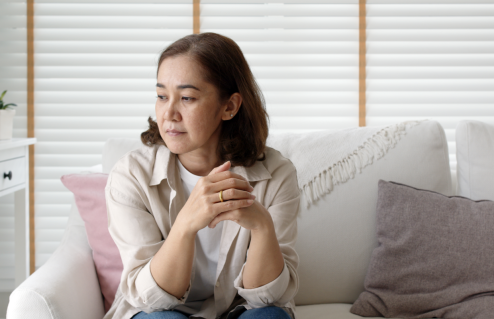Take control of stress by breathing
So, how do you combat anxiety? Research shows that one easy way is to just breathe deeply. Here’s why it’s effective and how you do it…

Why it works
In 1970, Harvard Medical School cardiologist, Dr Herbert Benson, researched a technique to induce an opposing reaction to the ‘stress response’ – that feeling of anxiety we get that comes from being constantly triggered into fight-or-flight mode by the stressors of modern-day life.
He found that we can invoke a ‘relaxation response’ instead, which counteracts the ‘stress response’ through our breath, and the first step is by simply breathing deeply. Yoga, meditation, mindfulness and tai chi all help with stress – and breath is the one factor that connects them all.
How it works
Deep breathing, which uses the full space in the abdomen to fill with air rather than only our chests, is scientifically proven to increase oxygen within the body, creating energy and improving functionality in all areas. It balances the nervous system, lowers our heart rate, decreases the production of stress hormones, cortisol and adrenaline, and cleanses our body of carbon dioxide and 70 per cent of other bodily waste.
It also helps to keep oxygen and carbon dioxide levels balanced, which supports an alkaline environment; as infection and inflammation thrive in acidity, explains Jean Hall, author of Breathe: Simple Breathing Techniques For A Calmer, Happier Life.
When not to do it
There are some circumstances under which deep breathing is not helpful. If you are prone to panic attacks, which involve hyperventilation, causing a dramatic drop in carbon dioxide levels in the blood, a recent study at the Southern Methodist University found that the antidote to reverse hyperventilation is not to take deep breaths, but slow, shallow ones.
Try this
Next time you feel overwhelmed, try the self-soothing breath. Adopt this comforting pose to alleviate anxiety; the gentle, rhythmic rolling motion used in this practice helps to soothe both the body and the brainwaves. Drawing up the legs and hugging them softly can make powerful feelings seem less overwhelming, as you protect and contain them with this action.
Self-soothing breath
- Lie down on your back in a comfortable position.
- Bend your knees up towards your body and gently hug your legs, relaxing your feet and ankles. Soften and release your shoulders to the floor, relax your back and lower your chin to lengthen the back of your neck. Close your eyes.
- As you hug your legs to your body, pay particular attention to your breath. Notice its natural rise and fall; your energy softly rising when you inhale and gently falling when you exhale. When you inhale, allow your belly and ribs to rise up towards your thighs, then sink back down again when you exhale. Settle here for a few moments.
- Slowly and gently, roll your body a little to the right and then to the left, using the floor to massage your back. Keep the motion relaxed, soft and rhythmical.
- Now, begin to coordinate the rocking motion with your breath. As you inhale, gently roll to the right, and as you exhale, roll back to centre. Slowly inhale as you rock to the left, and exhale as your rock back to the centre.
- Continue rolling for 5-10 minutes, until you feel a quiet calm flowing through your body and mind. Take time to breathe, moving slowly and smoothly.
Adapted from ‘Breathe: Simple Breathing Techniques For A Calmer, Happier Life’ by Jean Hall (Quadrille, £7.99).
Photograph: iStock









